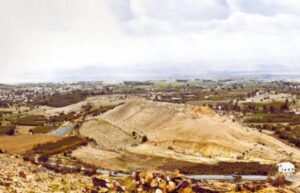Biblical Account of Sodom and Gomorrah
The Story of Sodom and Gomorrah in the Bible
The story of Sodom and Gomorrah is one of the most dramatic and cautionary tales found in the Bible. It is primarily recounted in the Book of Genesis, chapters 18 and 19, where it is narrated that God, having heard of the grievous sins of the cities, decides to destroy them. However, before doing so, He sends two angels to the city of Sodom to investigate and to rescue Lot, Abraham’s nephew, who resides there.

The narrative unfolds with the angels arriving in Sodom and being offered hospitality by Lot. However, the men of the city surround Lot’s house, demanding that the visitors be handed over to them for nefarious purposes. Lot refuses, and the angels strike the assailants with blindness, giving Lot and his family the chance to escape. They are warned not to look back as they flee. Unfortunately, Lot’s wife disobeys and looks back, turning into a pillar of salt as a result.
The next morning, the cities of Sodom and Gomorrah are consumed by fire and brimstone from heaven, utterly destroying them. This vivid imagery of divine wrath has made the story one of the most memorable accounts in the Bible, symbolizing the consequences of sin and the importance of righteousness.
The Sins of Sodom and Gomorrah
The exact nature of the sins committed by the inhabitants of Sodom and Gomorrah has been the subject of much theological discussion. Traditionally, these cities have been associated with sexual immorality, particularly homosexuality, which has led to the term “sodomy” being used to describe certain acts. However, a closer reading of the biblical text, along with interpretations from other religious traditions, suggests a broader range of sins, including inhospitality, pride, greed, and the mistreatment of the poor and vulnerable.
The prophet Ezekiel, for instance, references Sodom in his writings, emphasizing that the city’s inhabitants were guilty of arrogance, gluttony, and a lack of compassion for the needy. This broader interpretation points to a society that had become morally corrupt on multiple levels, leading to its ultimate destruction. The sins of Sodom and Gomorrah, therefore, serve as a stark warning against the dangers of allowing moral decay to take root in a society.
Divine Judgment: The Destruction of the Cities
The destruction of Sodom and Gomorrah is often portrayed as a direct act of divine judgment, a punishment for the widespread wickedness of their inhabitants. According to the biblical account, God rained down fire and brimstone upon the cities, obliterating them in an act of cleansing. This act of destruction is not just a physical event but also a powerful symbol of the consequences of turning away from divine law and engaging in sinful behavior.
The imagery of fire and brimstone has since become synonymous with divine retribution, used in various religious and literary contexts to describe severe punishment. The story of Sodom and Gomorrah, with its dramatic depiction of divine judgment, serves as a reminder of the importance of adhering to moral and ethical principles, as well as the potential consequences of failing to do so.


